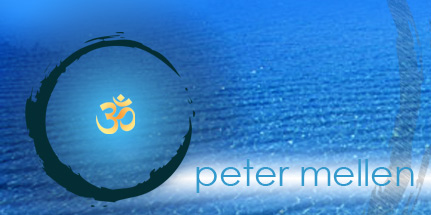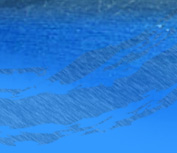| |
Hurry-Worry Never Works
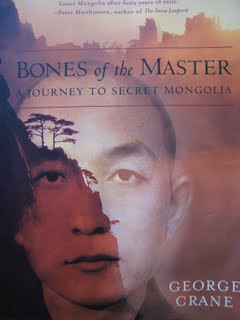 In 1959, Tsung Tsai, a Buddhist monk, escaped from the Red Army troops that destroyed his monastery, and walked three thousand miles across China to Hong Kong, nearly dying in the process. Years later he ends up living in upstate New York, where he builds his own house and lives a monastic life. During a snowstorm, he meets his neighbor, a young hippie poet from New York named George Crane. An unlikely friendship forms between them as they sip tea and read poetry together. Tsung Tsai shows the poet some poems in Chinese, and George gets very excited about the idea of translating them into English. But Tsung Tsai knows that it is not yet time. “Hurry-worry never works,” he says. George Crane later writes about this extraordinary friendship (and and their daring journey into Lower Mongolia) in his delightful book called Bones of the Master—A Journey to Secret Mongolia. I often think about Tsung Tsai saying, “Hurry-worry never works” in reference to my own life. Lately I’ve been obsessively driving myself to “get things done.” My busy little mind says, “If you can just finish this project, then you can relax.” Once I finish it, I’m saying, “You’ve got to get those letters out.” On and on it goes. Soon there is no time to breathe (because of my own self-imposed deadlines), and my body becomes tense and stressed out. It’s all about “me” having to get “my” projects done. What a vicious cycle. Today, while meditating, I could almost feel the frenzied rush of “hurry-worry” thoughts. I notice that it’s all about “my” thoughts, “my” feelings, and “my” worries. What would it be like not to have these thoughts? What would it be like not to be constantly thinking, “I need to do this, I need to do that?” I realize that I don’t have to live with these little gnats constantly buzzing around in my head. All I need to do is “flush” them out by dropping inside and being still. If I place my attention on what’s happening right here, right now, there's no room for the "me" thoughts. And when they come back (which they most certainly will), all I need do is take a few moments to be still once again. What’s left when they are gone? Nothing but empty awareness. When there’s no one there to claim these thoughts, there is nothing but peace. What a relief. The challenge is that if I do slow down, I have to look at why I’m so driven to get all this stuff done. I have to ask, “What is all this “doing” about? Do I need to create meaning in my life through doing, and more doing?” Is it all so that I will feel important, fulfilled, and happy? Am I justifying my obsessive behavior by saying I have to make money, support my family, and make a contribution to the world? Is it so that I can avoid seeing who it is that I truly am? Who would I be without any of that? A very peaceful guy. I remember an interview Lama Surya Das had with the Twelfth Gyalwang Drukpa, a little Tibetan guy with a sunhat, big glasses coming down his nose, and a hilarious expression of gleeful laughter on his face. He told Lama Surya Das, “I would say that not doing too much is the important thing. We tend to try to overdo everything. Such conceptual actions just create more karma. Consider nondoing, nonaction for a while, and leaving things as they are.” And here’s the kicker for me. In reference to his own life, the Twelfth Gyalwang Drukpa said, “I have a mission of not doing anything. My goal is not doing anything, ultimately. Just being. That’s it.” Now that’s something worth doing!
Snookered
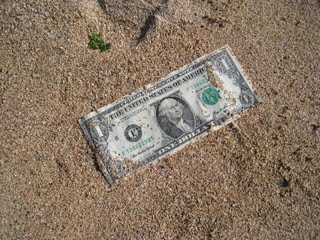 The waves are breaking gently on shore as I take my regular walk down Baldwin beach on Maui. The drop-dead gorgeous beach stretches a half-mile before me, with hardly a soul on it. I take in the special color of the water today, a light turquoise that extends one hundred yards offshore. My dogs walk along beside me, sniffing for any food that may have been left behind by previous beachgoers. I take a deep lungful of the fresh salt air, clean and pure after blowing across thousands of miles of ocean. A few feet ahead of me I see a dollar bill lying in the sand. How did that get here? I think. I don’t see anyone around. Maybe I should pick it up and find its owner? I reach down to pick it up, but the wind blows it a little further up the beach. Well, maybe it doesn’t belong to anyone any more. Finders keepers. But is it worth chasing a dollar bill? A dollar bill doesn’t get you very far these days. I take a few steps and stretch out my hand to grab it. Once again it flutters in the wind and blows further up the beach. Now this is getting crazy. I’m not going to let that dollar bill get away and disappear into the bushes. The wet bill lies flat on the sand. This should be easy. Grab it quick! I almost have it in my hand when, whoosh, it flutters a few yards away. Damn. I nearly had it. I’ll give it one last try. I take a few steps, pulling the dogs on their leashes. They look up at me, wondering what I’m doing. Now—I’ve got it! I zip my hand out for the final grab, when the bill suddenly takes off high into the air, reeled in by two guys who are laughing hysterically. I start laughing along with them, “I’ve been snookered! Good one!” I yell to them over the wind. “You guys are good!” They’re bent over in laughter and I am too. “Next time put a twenty on!” We’re all in hysterics. I wave and continue down the beach with a big smile on my face. How interesting, I think. Here I was, peacefully enjoying my walk, when out of nowhere, a desire showed up at my feet in the form of a dollar bill. My first reaction was, “Can I return it to its owner?” The next thought was, “I just can’t let this go. I’ve got to grab it.” I jumped, then jumped again, reeled in by my desire, totally forgetting my peaceful walk. Life shows up in wonderful and mysterious ways to show us exactly what we need to learn . . . and I’m still smiling.
Geezer in Paradise
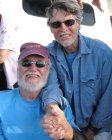 Aging is like going through a funnel. You start out with so much room, spinning so fast, wondering just how far you can go, but in the end you wind up going through the hole. Aging is like going through a funnel. You start out with so much room, spinning so fast, wondering just how far you can go, but in the end you wind up going through the hole.
Albert Brooks There is no set date for it, but geezerdom seems to start around the time when the odometer rolls down towards 70. It’s very different from being a fresh, young “senior citizen” who has just turned 55, and signed up for AARP, excited that you can get discounts at the movies. Geezerdom comes later, when your body starts to fall apart in a major way, your face starts to looks like a cadaver, and you become invisible to the world. I thought that by moving to Hawaii, I could add on a few more years of looking like a young, healthy “senior.” I could at least have a tan, wear my hair in a pony-tail, and look like an eccentric hippie. But not so. The young, hip clerks in grocery stores either look right through me, as if I don’t exist, or they make an effort to be real polite, “Do you need some help with your bags today, sir?” No, of course I don’t need help with my goddamned bags! Perhaps if I lived in Florida, and not Hawaii, it would be different. Both the clerks and the baggers would be older than I am. Well, at least there is one fellow geezer here on the island who hasn’t faded into the woodwork. His name, of course, is Ram Dass, the grand elder statesman who inspired a whole pack of baby boomers through the sixties, seventies, and eighties. He wrote the cult classic Be Here Now way over 35 years ago. His marvelous book Still Here shows boomers how they can age gracefully. Since his stroke ten years ago, after which he was confined to a wheelchair, Ram Dass doesn’t get around much anymore. But he still shows up just about everywhere on Maui to lend his shining presence to events. When he holds his monthly get-togethers, there are always a lot of young people—island hippies, a young mother with a baby at her breast, bronzed young men with sun-bleached hair in a ponytail. Now, unlike me, they don’t see Ram Dass as an old fart. What’s the difference? One difference is that they admire him for all the drugs he has taken (this is Maui, remember?). Another is that he laughs at himself a lot—and at the world. And most of all, he sees no difference between himself and anyone out there. For Ram Dass, there is just life going on around him. He doesn’t judge people their looks, what they’re wearing, or by how young or old they are. And most people don’t judge him; they love him. So the next time I feel invisible or feel judged for being old, it is an opportunity for me to see what is beyond age, beyond looks, and beyond the body. Let’s face it, we scare the hell out of these guys. They’re terrified they will become like us—and they will! If we can find it in ourselves to love them—even if they appear not to see us, or speak slowly and in a loud voice, believing we’re deaf and stupid—love will melt away all the differences. Because love is all there is, and it is who we are.
|



